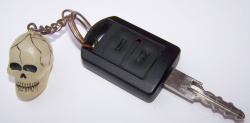
— Auto accidents are the leading cause of death for U.S. teens, and according to the Centers for Disease Control and Prevention, eight teens ages 16 to 19 die each day from traffic accident injuries.
Per mile driven, teen drivers ages 16 to 19 are four times more likely than older drivers to crash.
Based on the most recent statistics, about 3,000 teens yearly aged 15-19 are killed and more than 350,000 treated in emergency departments for injuries suffered in auto accidents.
A tragic accident can occur at any time, but according to AAA, certain days are worse than others for teen drivers.
The 100 or so days between Memorial Day and Labor Day are the deadliest, containing five of the top 10 worst days of the year for fatal highway crashes involving teens, based on AAA’s analysis of crash data from the National Highway Traffic Safety Administration.
According to AAA, nearly 6,700 teen drivers and passengers ages 13-19 died in traffic crashes between the Memorial Day and Labor Day holidays during the five-year period of 2006-2010.
An average of 399 teens died in traffic crashes during each of the summer months (May-August) compared to a monthly average of 346 teen deaths during non-summer months.
“During the summer, teens tend to drive more often and with less supervision than they do during the school year,” said Jim Lardear, Director of Public and Government Affairs for AAA Mid-Atlantic.
“That’s why AAA urges parents to establish a driving agreement (PDF) that keeps teens off the road at night and restricts riding in cars with multiple passengers. This agreement should be in place all year long, but especially during the high-risk summer months.”
The top ten deadliest days of the year for teenage drivers are ranked as follows:
1. July 4
2. June 10
3. May 20
4. August 14
5. September 26
6. May 23
7. August 8
8. July 9
9. November 24
10. January 21
To keep your teen safe on the road, AAA suggests the following tips:
Eliminate trips without purpose: A teen’s crash risk is highest during the first year of solo driving. Limit teens’ driving to essential trips and only with parental permission for at least the first year of driving.
Limit passengers: Crash rates increase with each teen passenger in the vehicle. Fatal crash rates for 16- to 19-year-olds increase fivefold when two or more teen passengers are present versus when teens drive alone. Establish passenger limits and restrict teens from riding as a passenger with a teen driver.
Restrict night driving: A teen driver’s chances of being involved in a deadly crash doubles at night. Many parents limit driving during the highest-risk late night hours, yet they should consider limiting evening driving as well, as more than half of nighttime crashes occur between 9 p.m. and midnight.
Teach your teens how to drive: The best way for new teen drivers to gain experience is through parent-supervised practice driving, where parents can share their wisdom accumulated over many years of driving. Even after a teen has a license that allows solo driving, parents and teens should continue to practice driving together to help the teen manage increasingly more complex and challenging driving conditions.
Establish a parent-teen driving agreement: Written agreements help set and enforce clear rules about night driving, passengers, access to the car, and more. Click here for a PDF sample agreement.
Be there for them: Make sure your teen knows that if they need help, advice or a ride, they can call you at any time. Save any judgment for later and help them when they need it.




